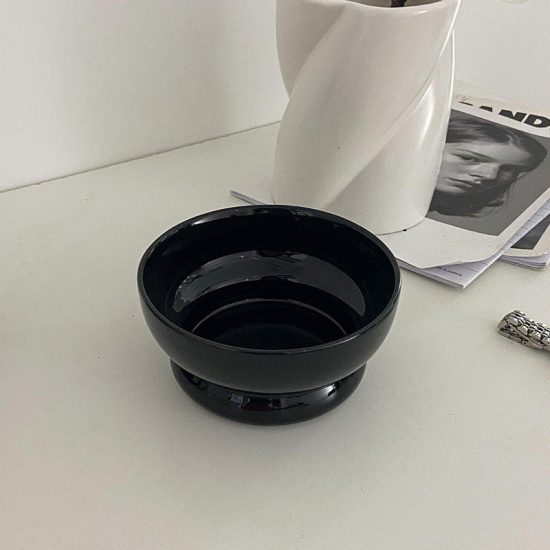A bowl is a versatile and commonly used vessel designed for holding and serving various types of food and liquids. It typically features a rounded or cylindrical shape with an open top and a flat bottom. Bowls come in a wide range of sizes, materials, and designs, catering to different culinary needs and aesthetic preferences.
Bowls serve several purposes in the kitchen and dining area. They are used for containing and presenting foods such as soups, stews, salads, cereals, pasta, rice, desserts, and snacks. Bowls can also be used for mixing ingredients during food preparation or for holding sauces, dips, and condiments.
Here are some key aspects and features of bowls:
- Size and Capacity: Bowls are available in various sizes, ranging from small individual serving bowls to large mixing bowls. The size and capacity of a bowl depend on its intended use. Smaller bowls are suitable for individual portions or condiments, while larger bowls are used for family-style meals or mixing larger quantities of ingredients.
- Material: Bowls can be made from a variety of materials, including:
- Ceramic and Porcelain: Ceramic and porcelain bowls are popular choices for their durability, heat resistance, and aesthetic appeal. They come in various designs, patterns, and colors and are commonly used for both cooking and serving.
- Glass: Glass bowls are transparent, allowing for easy visibility of the food inside. They are often heat-resistant and suitable for serving both hot and cold dishes. Glass bowls are commonly used for desserts, salads, and mixing ingredients.
- Stainless Steel: Stainless steel bowls are known for their durability, heat resistance, and easy maintenance. They are commonly used in professional kitchens and are suitable for mixing, food preparation, and serving.
- Plastic: Plastic bowls are lightweight, unbreakable, and often used for outdoor dining, picnics, or children’s meals. They are available in various colors and are easy to clean and transport.
- Shape and Design: Bowls come in different shapes and designs to accommodate various culinary needs. Some common shapes include round, square, oval, or even asymmetrical. The design may feature a smooth and minimalist look or include decorative patterns or embellishments.
- Rim and Depth: The rim of a bowl can vary in thickness and shape. Some bowls have a wide and flat rim, which is convenient for holding or carrying. Others may have a narrower or flared rim, offering a more elegant and ergonomic grip. The depth of a bowl can also vary, with deeper bowls suitable for holding liquid-based dishes, while shallow bowls are often used for salads or side dishes.
- Stackability and Storage: Many bowls are designed to be stackable, allowing for efficient storage in cabinets or drawers. Stackable bowls save space and make organization easier, especially when you have multiple sizes or sets of bowls.
Bowls are an essential part of kitchenware and diningware, providing a functional and aesthetically pleasing way to present, serve, and enjoy a wide variety of foods and beverages. The choice of bowl depends on personal preferences, intended use, and the overall style of the dining experience.


